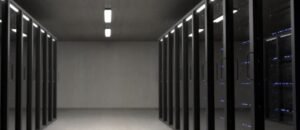AI vs. Robotics: Which Is Better?
In today’s rapidly advancing technological landscape, the fields of artificial intelligence (AI) and robotics are making significant strides. Both AI and robotics have the potential to revolutionize various industries, but determining which is better can be a complex matter. Let’s delve into the key aspects of AI and robotics and explore their different capabilities, applications, and implications.
Key Takeaways
- AI focuses on developing intelligent systems that simulate human intelligence.
- Robotics involves designing and building machines that can execute physical tasks autonomously.
- AI has a broader range of applications, while robotics excels in tasks that require physical manipulation.
- Combining AI and robotics can lead to powerful and efficient systems.
Artificial intelligence is a field of computer science that aims to create intelligent systems capable of performing tasks that typically require human intelligence. Machine learning and deep learning are subsets of AI that enable machines to learn from experience and improve their performance over time. **AI technologies have found applications in diverse fields such as healthcare, finance, transportation, and robotics.** By analyzing vast amounts of data and identifying patterns, AI systems can make predictions, automate processes, and enhance decision-making. *For example, AI in healthcare can assist doctors in diagnosing diseases more accurately.*
On the other hand, robotics involves creating physical machines that can perform tasks autonomously or under human supervision. These machines can be programmed to move, interact with their environment, and manipulate objects. **Robotics finds application in manufacturing, agriculture, healthcare, and exploration, among others.** By integrating sensors, actuators, and AI algorithms, robots can perform complex tasks that may be dangerous or repetitive for humans. *For instance, robots are increasingly being used in assembly lines to enhance production efficiency.*
AI and Robotics: Complementary Technologies
While AI and robotics have distinct focuses, they are not mutually exclusive. In fact, combining these technologies can lead to even more powerful and efficient systems. By integrating AI capabilities into robots, we can enhance their decision-making ability and make them adaptable in dynamic environments. **The synergy between AI and robotics has fostered the development of advanced medical robots, self-driving cars, drone surveillance systems, and more.** These technologies offer great potential for solving complex problems and revolutionizing various industries.
In the healthcare sector, the combination of AI and robotics has given rise to robotic surgical systems that assist surgeons during procedures. These systems leverage AI algorithms to improve accuracy, reduce invasiveness, and enhance patient outcomes. *For example, the da Vinci Surgical System enables surgeons to perform delicate surgeries with precise movements and enhanced dexterity.* The integration of AI’s analytical capabilities into robotics enables these machines to adapt to the individual needs of patients and promote personalized medicine.
The Future of AI and Robotics
The future of AI and robotics is promising, with ongoing advancements that have the potential to transform various aspects of society. By pushing the boundaries of AI research, we can create more intelligent systems capable of understanding and learning from human behavior. Additionally, as robotics technology continues to evolve, we can expect more sophisticated and versatile robots that can navigate complex environments and collaborate with humans seamlessly.
However, it is crucial to address the ethical challenges associated with AI and robotics. Ensuring transparency, accountability, and fairness in AI algorithms is essential to prevent biased decisions and harmful consequences. Moreover, concerns about job displacement and the impact on the workforce must be taken into consideration when implementing these technologies.
Data Points: AI and Robotics
| AI | Robotics |
|---|---|
| AI systems can process and analyze vast amounts of data to extract meaningful insights. | Robots can execute physical tasks with precision and accuracy. |
| AI-powered chatbots are becoming more prevalent in customer service, providing 24/7 assistance. | Robots are used in hazardous environments, such as nuclear power plant inspections or defusing bombs. |
| AI algorithms are being employed to develop autonomous vehicles, revolutionizing transportation. | Robots are utilized in healthcare settings, aiding in patient care and assisting in tasks such as lifting and moving. |
Conclusion
The question of which is better, AI or robotics, cannot be definitively answered as both have unique strengths and applications. **AI is more focused on simulating human intelligence and has a broader range of applications, while robotics excels in physical manipulation tasks**. However, the integration of AI and robotics has paved the way for groundbreaking advancements and offers immense potential for future innovations. By leveraging the synergy between these fields, we can create intelligent and capable systems that can improve our lives in many ways.

Common Misconceptions
Misconception 1: AI and robotics are interchangeable terms
One common misconception people have is that artificial intelligence (AI) and robotics are the same thing. While they can complement each other, they are distinct concepts.
- AI refers to the simulation of human intelligence in machines that are programmed to think and learn.
- Robotics involves the design, creation, and use of robots that can interact with and manipulate their environment.
- AI can be applied in various devices and systems, not just robots, to perform tasks that require intelligence.
Misconception 2: Robotics is more advanced than AI
Another misconception is that robotics is more advanced than AI. While robotics often incorporates AI technologies, AI has a broader scope and is continually advancing at a rapid pace.
- AI encompasses a wide range of applications, such as natural language processing, computer vision, expert systems, and machine learning.
- Advancements in AI have led to breakthroughs in various domains, including healthcare, finance, and transportation.
- Robotics, on the other hand, focuses on the physical embodiment and interaction with the environment, which is just one aspect of AI.
Misconception 3: One is better than the other
Some people mistakenly believe that either AI or robotics is superior to the other. However, the effectiveness of each depends on the specific context and application.
- AI excels in tasks requiring complex data analysis, decision-making, and pattern recognition.
- Robotics shines in physical tasks that involve dexterity, manipulation, and interaction with the environment.
- Combining AI and robotics can create powerful systems that leverage the strengths of each to perform complex tasks efficiently.
Misconception 4: AI will replace human jobs through robotics
Many people fear that AI-driven robots will replace human workers entirely. However, the reality is more nuanced.
- While some jobs may be automated with the help of AI and robotics, new opportunities and job roles emerge alongside technological advancements.
- AI and robotics can enhance human capabilities and enable humans to focus on more creative and higher-level tasks.
- Human skills like critical thinking, empathy, and intuition are still valuable and necessary in many contexts.
Misconception 5: AI and robotics are inherently autonomous
Lastly, it is important to recognize that not all AI or robotic systems are fully autonomous. Many rely on human input and control.
- Most AI systems require training and supervision by humans to perform well.
- Robotic systems may operate in semi-autonomous modes, where humans provide guidance and oversight.
- True autonomous AI and robotics are still a growing field of research, and their widespread deployment involves various ethical and safety considerations.

Comparing AI and Robotics in Various Industries
In this article, we explore the strengths and applications of both Artificial Intelligence (AI) and Robotics in different industries. Each technology brings its own set of benefits and capabilities, and understanding their differences can help us determine which is better suited for various tasks.
Exploring AI’s Advantages
Artificial Intelligence has revolutionized numerous industries with its ability to process vast amounts of data and make informed decisions. Let’s examine its advantages:
| Advantages of AI | Examples |
|---|---|
| Enhanced Accuracy | Medical diagnosis, fraud detection |
| Efficiency | Data analysis, customer service |
| Real-Time Decision Making | Algorithmic trading, autonomous vehicles |
Examining Robotics’ Capabilities
Robotics combines physical capabilities with advanced automation, making it invaluable in industries that require hands-on tasks. Let’s explore some of its capabilities:
| Capabilities of Robotics | Examples |
|---|---|
| Precision Manipulation | Surgical procedures, assembly lines |
| Endurance | Warehouse operations, construction |
| Physical Assistance | Supporting elderly, firefighting |
AI and Robotics in Healthcare
Both AI and Robotics have made significant contributions to the healthcare industry. Let’s see their applications in this vital sector:
| Applications in Healthcare | AI | Robotics |
|---|---|---|
| Diagnosis | AI-powered medical imaging | Robotic surgery systems |
| Supportive Care | Virtual nursing assistants | Assistive exoskeletons |
| Medication Management | AI-powered prescription generation | Robotic dispensing systems |
AI and Robotics in Transportation
The transportation industry has seen remarkable advancements with the integration of AI and Robotics. Let’s examine their contributions:
| Transportation Applications | AI | Robotics |
|---|---|---|
| Autonomous Vehicles | Self-driving cars | Delivery drones |
| Traffic Management | Ambient intelligent systems | Smart traffic lights |
| Logistics | Route optimization algorithms | Automated warehouses |
AI and Robotics in Entertainment
The entertainment industry heavily relies on AI and Robotics to create immersive experiences for audiences. Let’s explore their applications:
| Entertainment Applications | AI | Robotics |
|---|---|---|
| Virtual Assistants | Voice-activated smart speakers | Interactive humanoid robots |
| Animation | AI-generated character movements | Robot-assisted animatronics |
| Augmented Reality | AI-powered virtual content | Robotic haptic feedback devices |
AI and Robotics in Agriculture
Modern farming techniques have greatly benefited from the utilization of AI and Robotics. Let’s discover their applications in agriculture:
| Agricultural Applications | AI | Robotics |
|---|---|---|
| Crop Monitoring | Automated drone surveillance | Robotic weed removal |
| Livestock Management | Voice recognition-enabled systems | Milking robots |
| Harvesting | AI-guided fruit picking | Robotic fruit harvesting |
The Versatility and Synergy of AI and Robotics
AI and Robotics are not mutually exclusive technologies, but rather complementary. Their synergy allows for innovative solutions across industries, resulting in increased efficiency and improved quality. Choosing which is better depends on the specific requirements and objectives of each use case. By leveraging the distinctive strengths of AI and Robotics, we can unlock the full potential of intelligent automation.
Frequently Asked Questions
AI vs. Robotics
What is AI?
What is robotics?
How does AI differ from robotics?
Can AI be used in robotics?
Which one is better: AI or robotics?
What are the benefits of AI?
What are the benefits of robotics?
Are there any risks associated with AI?
Are there any risks associated with robotics?
Can AI and robotics work together?




